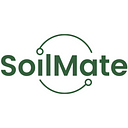Why we should be worried about food security
The World Bank predicts the pandemic will push an additional 88 million to 115 million people to fall into extreme poverty by the end of this year.
However, even before the pandemic, the number of people suffering from hunger had been on the rise again. Far from Zero Hunger, the number is predicted to come close to one billion.
GFS Index in Food Security
The pandemic deprived the low and middle-income countries of access to safe and nutritious food and questioned their food security because it is not only about the amount of food. It’s multifactorial. Global Food Security Index measures it by affordability, availability, quality, safety, natural resources, and resilience. For the third year in a row, the North American region has the worldwide highest level of food security. Europe ranks second, accounting for eight of the top 10 countries. And what is happening with food security in the second-largest and second most populous continent, Africa?
Food Security issue in world’s most vulnerable countries
Food security relies not only on environmental conditions. It is a complex issue and depends on various factors like social, economic, cultural, and political conditions. All these issues altogether result in influencing on Food Security and Global Hunger Indexes as of the current year.
According to the 2020 Global Hunger Index, out of 107 countries — 3 suffer from an alarming level of hunger — Chad, Timor-Leste, and Madagascar, and 31 have a serious level.
Hunger also is considered alarming in the following countries — Burundi, the Central African Republic, Comoros, the Democratic Republic of the Congo, Somalia, South Sudan, Syria, Yemen — and serious in 9 countries (Full hunger map below on the image).
Purposes of agricultural issues of the Sub-Saharan African countries
More than a year has passed since the onset of COVID-19, and the issue of hunger is still rising. We are reviewing the problems of agriculture on the examples of the world’s most vulnerable countries.
- Democratic Republic of the Congo. GHI score: alarming. Agriculture accounts for 68% of employment but represents only 19% of GDP, whereas services contribute 33% and the industry contributes 44%. Floods, landslides, and soil erosion also make production difficult and are likely to increase due to climate changes as well as farmers’ limited access to modern technologies and inputs.
- South Sudan. GHI score: alarming. Crop and vegetable production in South Sudan remains low. Farmers heavily rely on rain-fed crops. Growers also usually use seeds saved from the previous season. It means that irregular rains can lead to poor harvests, while heavy rains and floods can lead to flooding and loss of harvest. Conflicts also continue to push farmers out of their fields during planting seasons.
- Nepal. GHI score: moderate, showing that despite improvements, food and nutrition insecurity needs attention. Implementing agricultural programs, including home and school gardening programs, gave beneficial outcomes. However, to commercialize and diversify agriculture and achieve sustainable agricultural growth and poverty reduction that’s not enough.
Unsustainable farming practices: country’s case
Land degradation can increase food insecurity by reducing food productivity. It also contributes to desertification, reduced water supply and quality, and poor sanitation conditions.
The report of the World Health Organization mentions that of the 80 countries severely affected by land degradation, 36 are located in Africa. For example, in Lesotho, more than 2 percent of the total land area was degraded by inappropriate agricultural practices and overgrazing, as well as land mismanagement and overuse of chemicals/pesticides.
Incorrect land use is also a threat to food security in Nigeria. Soil erosion and deforestation — typical examples of environmental degradation that are often observed in Nigeria usually caused by inappropriate farming methods and technologies. Such significant farming practice as crop rotation is also usually ignored. It results in a lack of biodiversity and overuse of chemicals with attempts to grow the same amount of goods or more.
Why biodiversity matters read in our previous article: Biodiversity & Crop Rotation.
Common impacts include soil erosion, a decline in surface and underground water supply, and reduced food security.
What about the Zero Hunger Program?
The COVID-19 outbreak has more than ever made it clear that our food system is ineffective in achieving Zero Hunger until 2030, so anyone could join the most vulnerable countries in terms of food security list tomorrow.
Since Agriculture in Africa drives economic development and GDP growth, supporting growers in becoming sustainable and achieving zero hunger by establishing new technologies and programs should be a long-term process of development in vulnerable countries.
There are plenty of solutions applicable for every country, every farm, and every producer that faces issues of yield shortage, erosion, over-watering or under-watering, and other soil health threats. SoilMate is taking responsibility for these issues by extending our functionality with the new features. If you need our help — do not hesitate to contact us via our website or social media!
